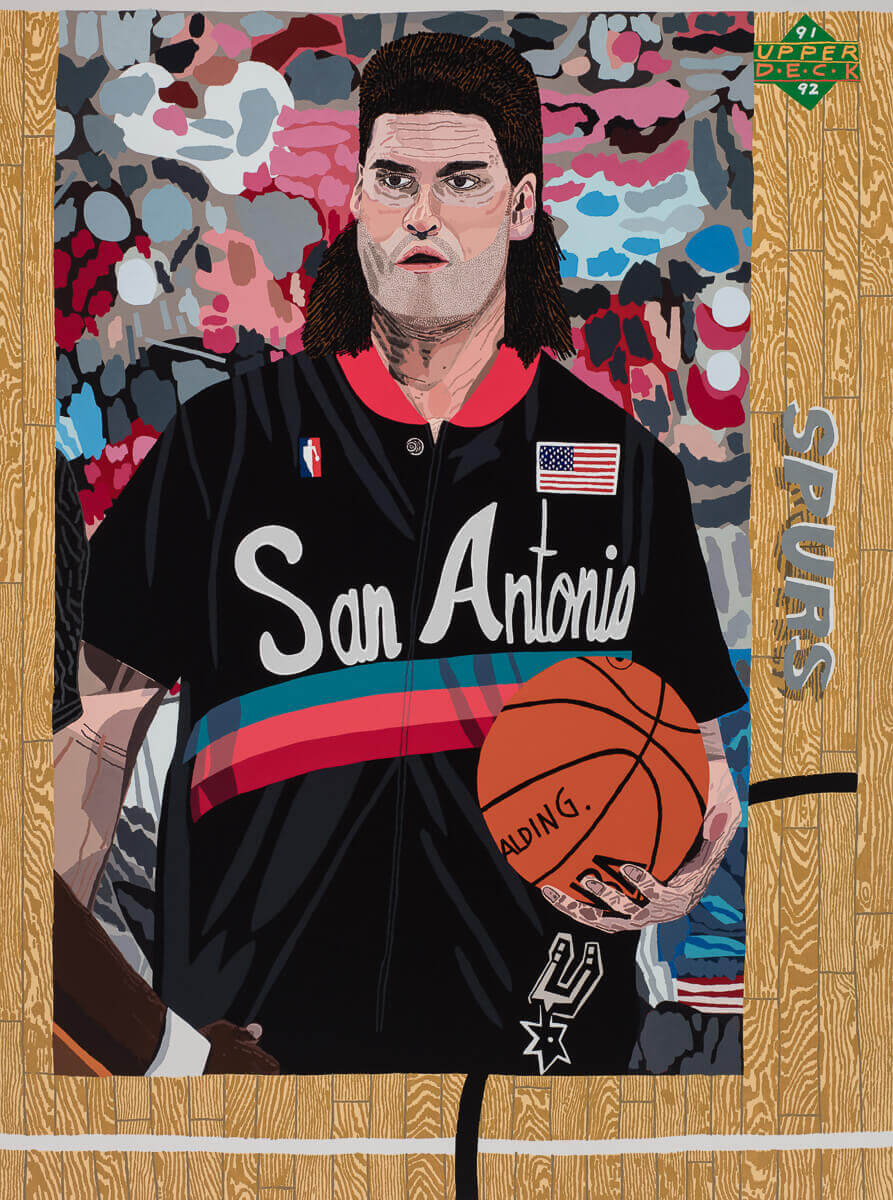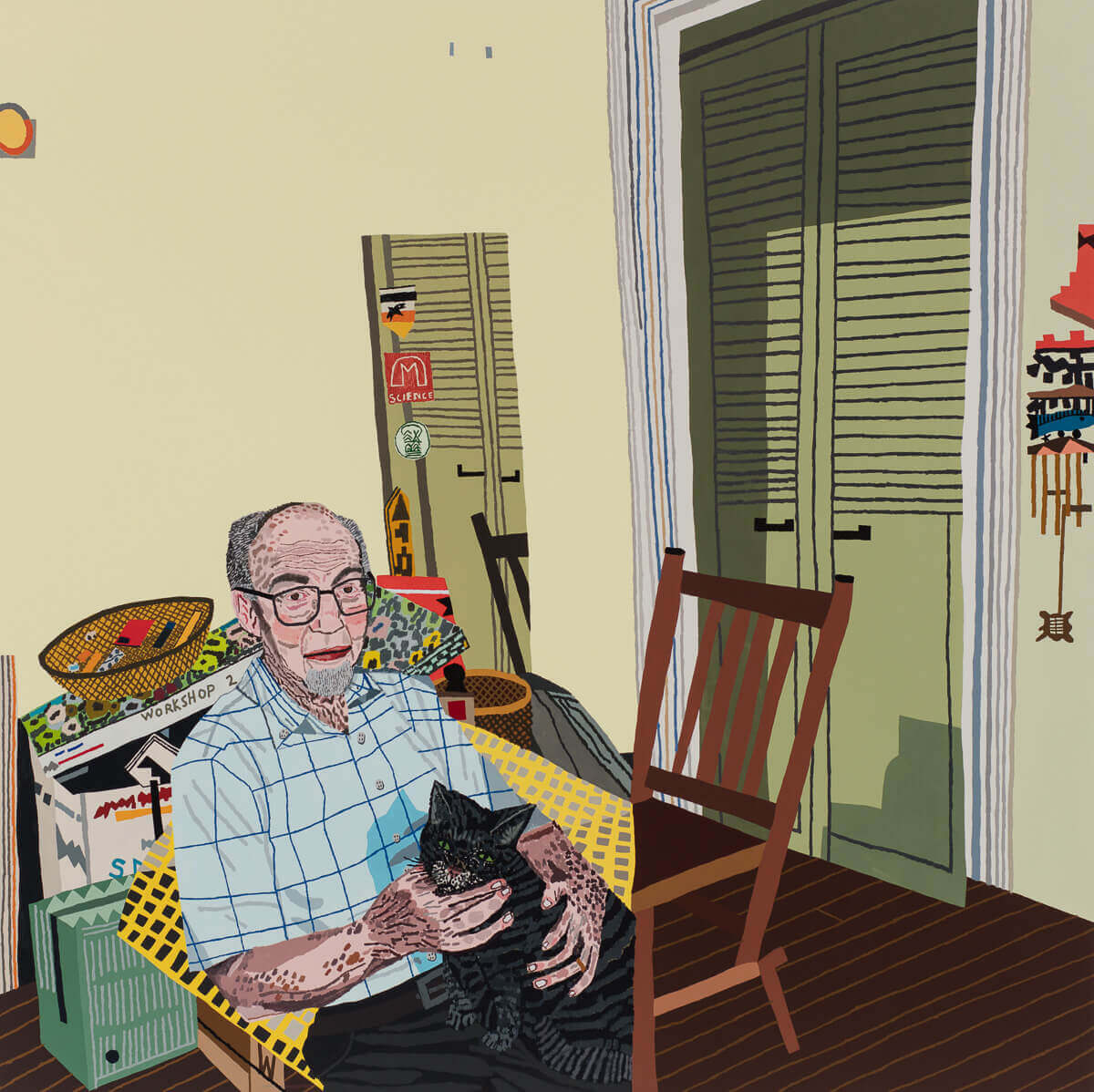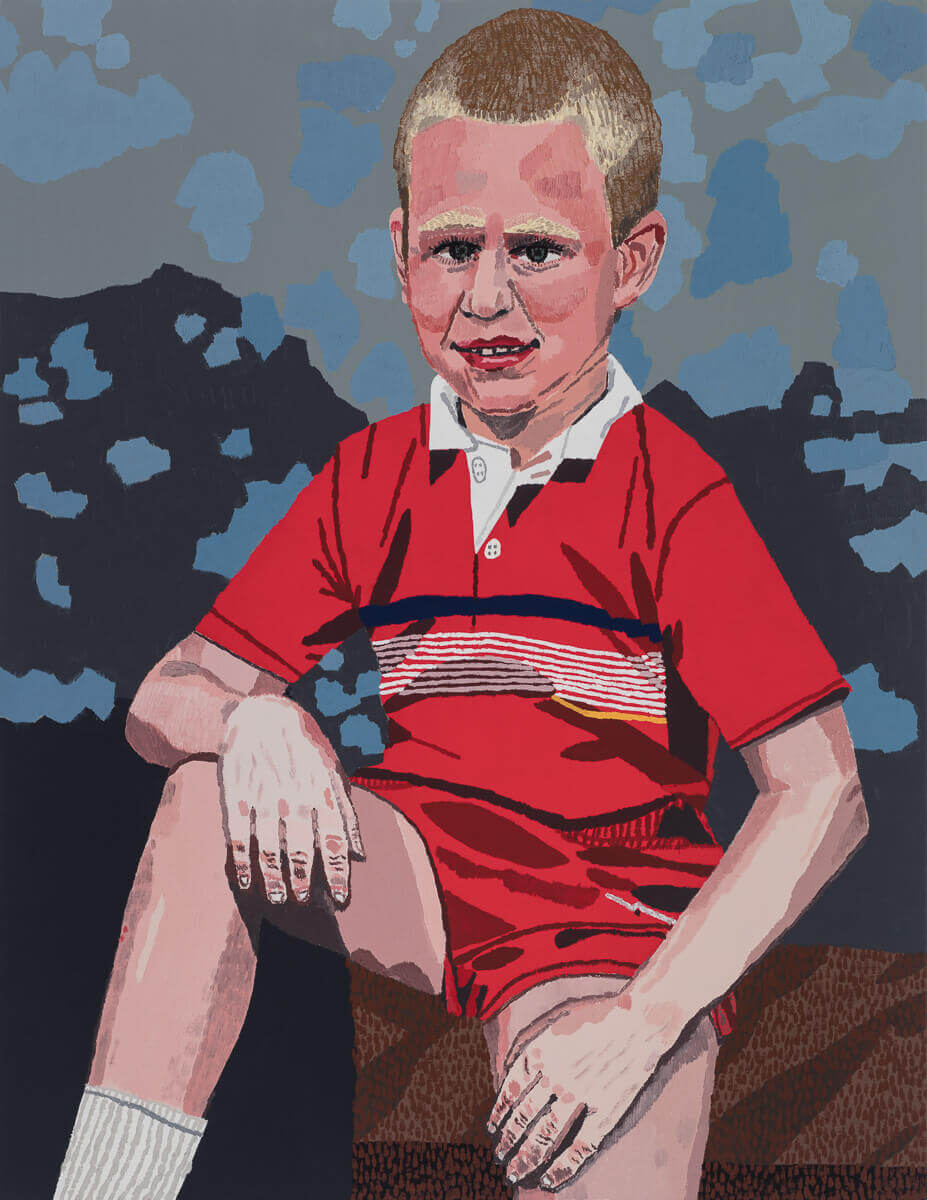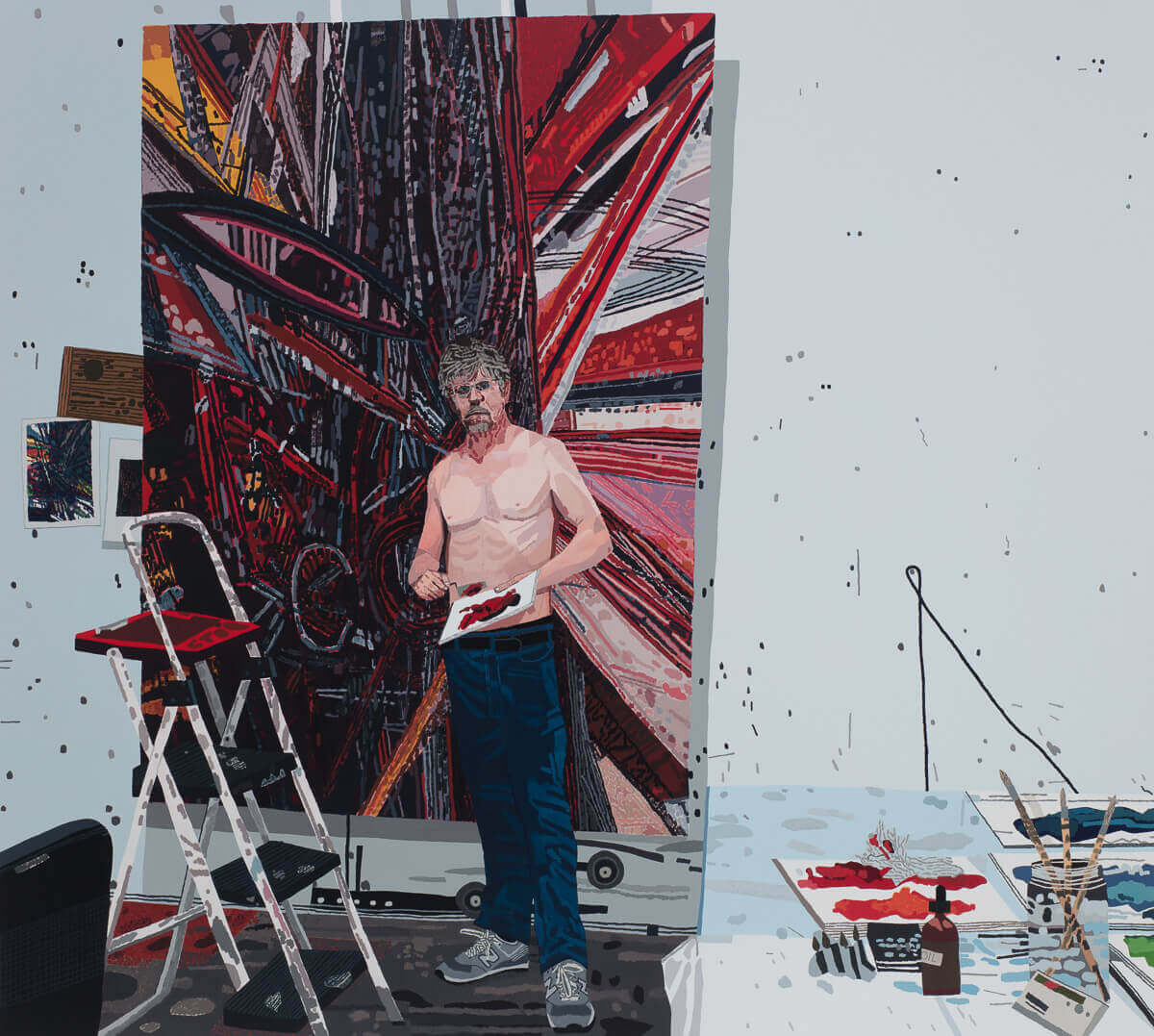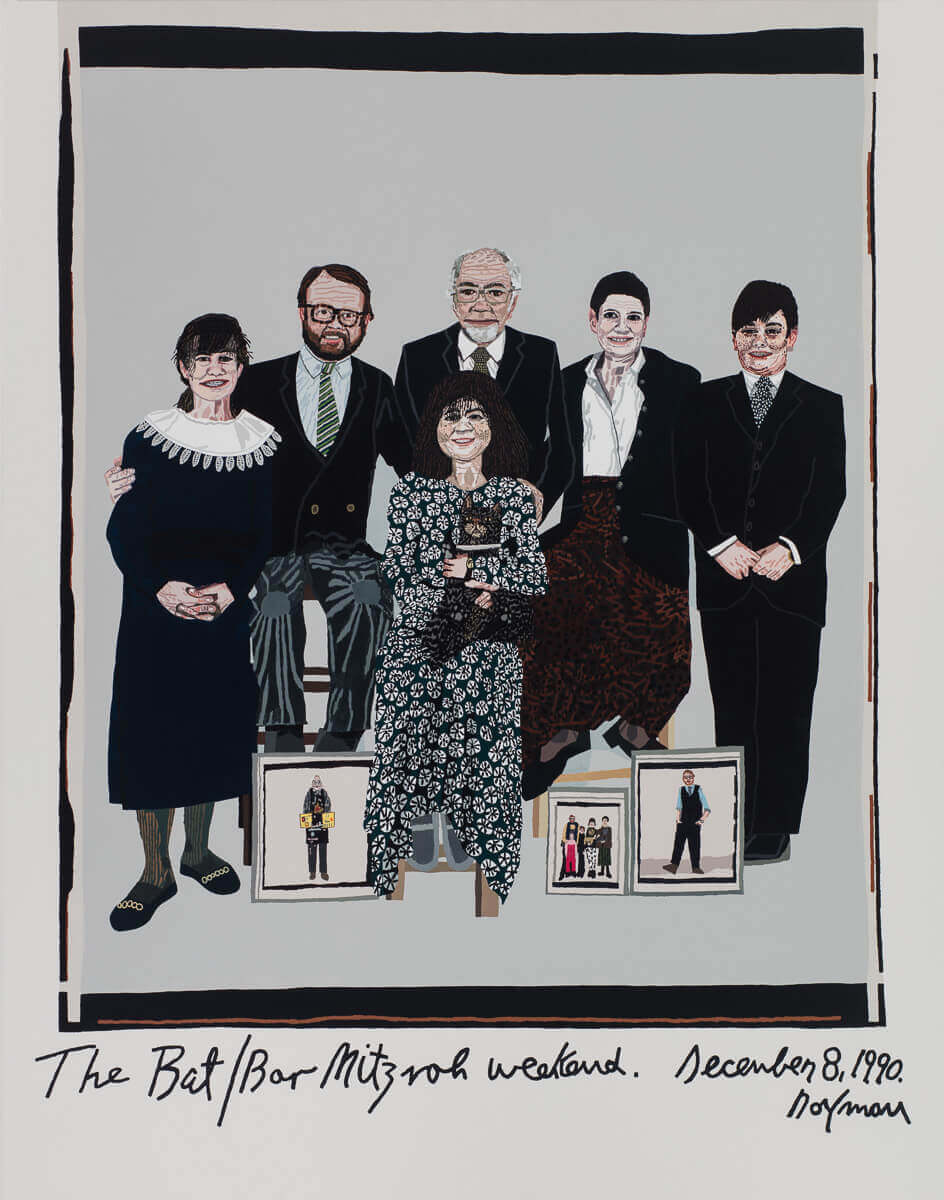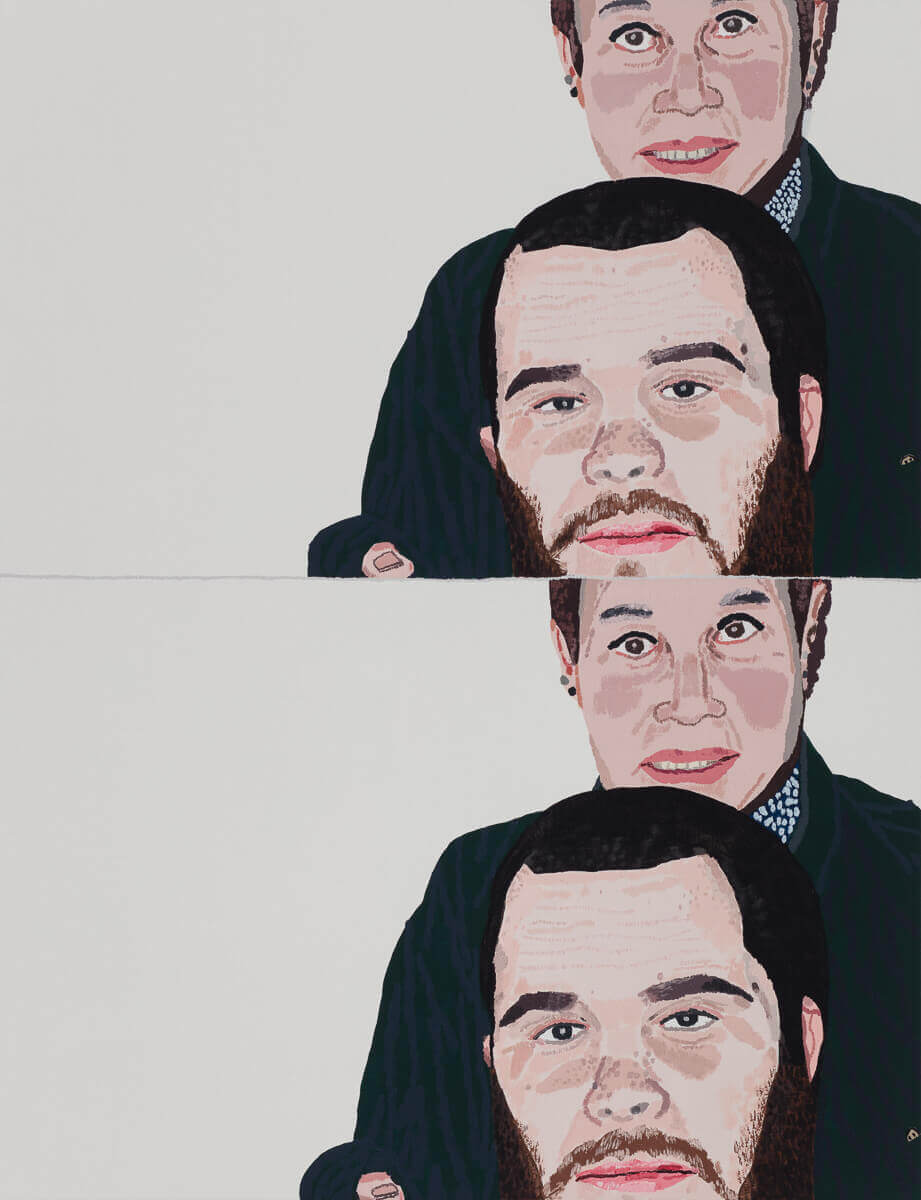Jonas Wood: Portraits
Anton Kern Gallery, New York
September 8 – October 29, 2016
With a keen sense of imitation’s essentials, Jonas Wood’s current show “Portraits” demonstrates how photography may expand contemporary painting’s enterprise. Working from photo-collages, he takes advantage of the information and rumination that photos – memory catchers – tender. Before this resource, sitters sat for hours for portraitists who excelled at respectable verisimilitude. Even when instruments like the camera obscura or lucida provided data, smart selection and organization were key. Masters like Velazquez and Rembrandt added gravity or psychological insight. After photography, painting opened other avenues, like the unfettered color expression of Van Gogh or Kandinsky. Wood’s work shows that way, guided by a Gris- or Leger-like cubist remove that makes affect indirect, and complicated by the variable of photographic likeness.
Wood’s cool perception has been likened to a near-mechanical equability to which “all visions are photographs.” 1 The light in his paintings impartially discloses, flat and even as a computer monitor. In this show the artist makes no attempt to hide lowbrow technological sources. Selfies, polaroids and trading cards are even absurdly enlarged: Mullet-sporting Dwayne Schintzius’s relaxed hand holds the basketball, inert jaw framing a terse, triangled, breath-siphoning mouth as he eyes his next move. The player’s moment, reflexes awaiting the executive brain’s delegation of action, is captured. Wood says the sports theme “is just a vehicle for practicing portraiture,” but it might also regard athleticism, the way Wood’s nonchalant execution of careful compositional planning makes technique look natural. 2
With control of tone, saturation and temperature, colors glow in rich combinations that soften irony. In “Rosy in My Room with His Cat,” the sitter’s subtle shirt sinks him comfortably into a warm chair. An uncertain background hue perfectly mediates between this yellow and blue, and complements small pops of advancing red. Age spots and wrinkles are honestly articulated before the painter merges them with varied patterns of basket weave, door slats, textile designs, and game boxes. His grandfather’s expression is open but clouded. Rosy’s fingers on the cat’s neck, gingerly holding it still for the photograph, however, are fully alert.
Before photography, figurative artists relied on quick sketches and visual memory built from years of drawing plaster casts. Fleeting gesture and micro-expression are now easily recorded digitally, and Wood’s sharp comprehension of them makes it unsurprising to learn his college major was psychology. The pose of the slightly smiling “Young Dr” is semi-studied casualness, aiming at jocular. His hands seem not quite sure where to place themselves yet willing, self-consciousness also betrayed by a stiff left shoulder. Exuberant boyhood incipiently aware of the possibility of ridicule is suggested, but lest things get sentimental, the too-dark outlines scrawled around his fingers and teeth amuse. Upon closer inspection, Wood’s handling disarms in its awkwardness, as though the brush were held by his toes. Emotional dissipation continues as the central bold red outfit lessens his ruddy complexion, moving from flesh to a cooler backdrop of indeterminate foliage at the edges.
When a painting is finished it is frozen in time, whereupon the new image will generate new memories at each viewing. Painting’s mesmerizing fixity is achieved in part by its haptic qualities, separating it from other 2D and time-based media. Like Guston – Wood’s marks are crude and funny, but also almost ‘on the spectrum’ in their disinterest – sarcasm can’t usurp beauty. Paraphernalia on the table in “Spiritual Warrior” could be a small homage to Guston, where a pile of grey paint has already presumptuously assumed significant form (though not yet a part of the abstract painting behind its painter, who watches his picture being taken).
In choosing photos, Wood responds to shapes and forms per se, then builds from “the loaded choice of imagery that is going to carry everything else.” 3 The ensuing painting quest is to create a “new memory.” 4
Photography’s transporting power is underscored in a large group portrait, “The Bat/Bar Mitzvah Weekend”. Collaged or not, photos lined up along the floor read as dearly departed unable to attend the ceremony but present in spirit. Sharpie letters along the bottom of the huge polaroid (his mother’s handwriting?) mark it as memorabilia. Other paintings in “Portraits” feature Wood’s mother, who recently passed away; the first painting on the left, “Robin and I (Double Portrait),” is a fractured selfie with her. In all these paintings, cartoonish levity renders people imperfect and likeable, as splendid color-shape arrangements deftly camouflage feeling.
Notes
1 https://frieze.com/article/room-view
2 http://www.artinamericamagazine.com/news-features/interviews/super-sports-fan-an-interview-with-jonas-wood/
3 http://hyperallergic.com/236072/beer-with-a-painter-la-edition-jonas-wood/
4 http://www.architecturaldigest.com/story/jonas-wood-mosaics-anton-kern-gallery
